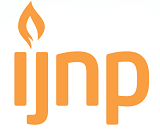Status Cairan Pada Pasien Pasca Pembedahan di RS PKU Muhammadiyah Gamping
Abstract
Abstrak
Latar belakang : Tindakan pembedahan dapat menimbulkan ketidakseimbangan cairan dan elektrolit yang akan menyebabkan gangguan fisiologis yang berat apabila tidak diatasi. Pemantauan status kebutuhan cairan pada pasien pasca pembedahan diperlukan untuk memenuhi dan mempertahankan kebutuhan cairan dalam tubuh. Tujuan penelitian ini untuk mengetahui status cairan pada pasien pasca pembedahan di RS PKU Muhammadiyah Gamping.
Metode : Penelitian ini menggunakan deskriptif analitik dengan rancangan survei dan pendekatan cross-sectional, sampel dalam penelitian ini adalah 44 responden. Pengambilan data menggunakan metode wawancara dan observasi menggunakan lembar observasi pemantauan status cairan berdasarkan kebutuhan cairan dan balance cairan. Analisa data menggunakan metode univariat untuk menghitung distribusi frekuensi variabel yang telah ditetapkan.
Hasil : Mayoritas responden memiliki kebutuhan cairan cukup dengan presentase sebanyak 31 orang (70,5 %) dan balance cairan kurang dengan presentase sebanyak 29 orang (65,9 %).
Kesimpulan : Mayoritas responden pasca pembedahan di RS PKU Muhammadiyah Gamping memiliki kebutuhan cairan cukup, namun status balance cairan kurang. Diharapkan perawat dapat melakukan pengukuran kebutuhan cairan dan balance cairan pasien dengan tepat, selain itu peneliti selanjutnya dapat melakukan penelitian lanjutan terkait faktor-faktor yang mempengaruhi balance cairan pada pasien pasca pembedahan.
Kata kunci : Pembedahan, pasca pembedahan, cairan, kebutuhan cairan, balance cairan
Abstract
Background: Surgery can cause fluid and electrolyte imbalances that will cause severe physiological disturbances if not treated. Monitoring fluid status in postoperative patients is needed to meet and maintain fluid requirements in the body. The purpose of this study was to determine fluid status in postoperative patients in PKU Muhammadiyah Gamping Hospital.
Method : This study used descriptive analytic with survey design and cross-sectional approach, the sample in this study were 44 respondents. Retrieval of data using interview method and observation using observation sheet monitoring fluid status based on fluid requirements and fluid balance. Data analysis uses the univariate method to calculate the specified frequency distribution of variables.
Result : The majority of respondents have enough fluid requirement with a percentage of 31 people (70.5%) and less fluid balance with a percentage of 29 people (65.9%).
Conclusion: The majority of respondents after surgery at PKU Muhammadiyah Gamping Hospital had sufficient fluid requirements, but the balance status of fluids was lacking. It is expected that nurses can properly measure the fluid needs and fluid balance of patients, besides that the next researcher can conduct further research related to the factors that affect fluid balance in postoperative patients.
Keywords: Surgery, post operative, fluid, fluid requirement, fluid balance
Keywords
Full Text:
PDFReferences
Abdullah, Ikhwan & Yuliana, Putri .(2015). Tingkat Pengetahuan Masyarakat Desa Pakijangan Kecamatan Wonorejo Kabupaten Pasuruan Tentang Pengobatan Akupuntur Untuk Penyakit Lambung. Vol 3. No 3. 25-30. Jurnal Kesehatan Hesti Wira Sakti
Aguirreurreta, Na. B., & JimAnez Suarez, J. J. (2016). Perioperative Fluid Therapy in the Pediatric Patient: Recommendations. Journal of Perioperative & Critical Intensive Care Nursing, 2(3).
Amin, Lukman Z.(2015). Tatalaksana Diare Akut. Vol 42. No 7. Coninuing Medical Education. 504-508.
Asfour, H. I. (2016). Fluid Balance Monitoring Accuracy in Intensive Care Units. IOSR Journal of Nursing a Nd Health Science (IOSR-JNHS), Volume 5(Issue 4 Ver. I (Jul.-Aug. 2016)), PP 53-62. Diakses pada tanggal 26 Oktober 2017 dari, https://www.researchgate.net/publication/306273473_Fluid_Balance_Monitoring_Accuracy_in_Intensive_Care_Units.
Black, M. J., & Hawks, J. H. (2014). Keperawatan Medikal Bedah: Manajemen Klinis untuk Hasil yang Diharapkan, Edisi 8-I Buku 1 (8 ed., Vol. 1). Singapore: Salemba Medika.
Briawan, D., Sedayu, T. R., & Ekayanti, I. (2011). Kebiasaan Minum dan Asupan Cairan Remaja di Perkotaan. Jurnal Gizi Klnik Indonesia. 8(1). 36-41.
Darsini & Hamidi, Faris.(2018). Pemanfaatan Cakram kebutuhan Asupan Cairan Untuk Peningkatan Keberhasilan Pelaksanaan Program Ayo Minum Air. Jurnal Keperawatan STIKES Insan Cendekia Medika Jombang. 1 – 9.
Depatemen Kesehatan RI. (2013). Riset Kesehatan Dasar. Jakarta : Departemen Kesehatan.
Ditya, W., Zahari, A., & Afriwardi, A. (2016). Hubungan Mobilisasi Dini dengan Proses Penyembuhan Luka pada Pasien Pasca Laparatomi di Bangsal Bedah Pria dan Wanita RSUP Dr. M. Djamil Padang. Jurnal Kesehatan Andalas, 5(3).
Ferdian, A. S. O., Supriyadi, & Puguh, S. (2015). Efektivitas Seft Dan Mobilisasi Dini Terhadap Penurunan Nyeri Pada Pasien Pasca Bedah dengan General Anestesi Di RS Panti Wilayasa Citarum Semarang. 1-9. Jurnal Ilmu Keperawatan dan Kebidanan (JIKK).
Indriawati, Ratna. (2013). Cairan Tubuh dan Elektrolit : Aspek Fisiologis dan Klinis.Yogyakarta : FKIK Universitas Muhammadiyah Yogyakarta.
Kayilioglu, S. I., Dinc, T., Sözen, I., Bostanoglu, A., Cete, M., & Coskun, F. (2015). Name of journal: World Journal of Critical Care Medicine ESPS Manuscript NO: 15548 Columns: Review Postoperative fluid management. World Journal of Critical Care Medicine, 4(3), 192–201.
Keat, Sally, Simon T. B., Alexander B. & Sarah L.(2013). Anesthesia On The Move. Jakarta : Indeks
Leksana, E. (2015). Strategi Terapi Cairan pada Dehidrasi. Semarang: RSUD Kariadi.
Lumbun, R. F. M. & Wardhana, Aditya.(2017). Peranan Eksisi Dini dan Skin Graft pada Luka Bakar Dalam. Vol 44. No 4. RSUPN Cipto Mangunkusumo. 249-254.
Mac Sweeney, R., McKendry, R. A., & Bedi, A. (2013). Perioperative intravenous fluid therapy for adults. The Ulster medical journal, 82(3), 171. Diakses pada tanggal 21 Mei 2017 dari, https://www.ncbi.nlm.nih.gov/pmc/articles/PMC3913409/pdf/umj0082-0171.pdf
Miller, T. E., Roche, A. M., & Mythen, M. (2015). Fluid management and goal-directed therapy as an adjunct to Enhanced Recovery After Surgery (ERAS). Canadian Journal of Anesthesia/Journal Canadien d’anesthésie, 62(2), 158–168.
Morgan, G. E., & Mikhail, M. (2013). Clinical Anesthesiology edisi-5. New York: MC.Grow.
Muthmainah, Q., & Purwanti, O. S. (2017). Upaya Peningkatan Volume Cairan Tubuh Pasien Post Laminectomy Lumbal. Universitas Muhammadiyah Surakarta.
Partologi, Donna.(2008). Teknik Eksisi. Medan : Departemen Kesehatan Kulit dan Kelamin FK USU.
Press, C. D.(2013). Gneral Anesthesia Medscape.
Puspita, R., Pudjiadi, A., Pusponegoro, H., Pardede, S. P. O., Karyanti, M. R., & Roeslani, R. D. (2016). Profil Pemberian Cairan Perioperatif serta Pengaruhnya terhadap Keseimbangan Asam Basa, Elektrolit, dan Kadar Glukosa Darah. Sari Pediatri, 17(5), 335–342.
Ratih, Annisa S. & Dieny, Fillah F.(2017). Hubungan Konsumsi Cairan dengan Status Hidrasi Pekerja di Suhu Lingkungan Dingin. Vol 6. No 1. Journal Of Nutrition Collage. 76-83.
Rose, J., Weiser, T. G., Hider, P., Wilson, L., Gruen, R. L., & Bickler, S. W. (2015). Estimated need for surgery worldwide based on prevalence of diseases: a modelling strategy for the WHO Global Health Estimate. The Lancet Global Health, 3, S13–S20.
Saputra, L. (2013). Pengantar Kebutuhan Dasar Manusia. Tanggerang: Banirupa Aksara.
Setiyanti, W.(2016). Efektivitas Selimut Alumunium Foil Terhadap Kejadian Hipotermi pada Pasien Post Operasi RSUD Kota Salatiga. Stikes Kusuma Husada Surakarta. 1 - 12.
Sjamsuhidajat, R., & De Jong, W. (2010). Buku Ajar Ilmu Bedah.Edisi 3 (Edisi 3). Jakarta: EGC.
Srinivasa, S., Taylor, M. H. G., Singh, P. P., Yu, T.-C., Soop, M., & Hill, A. G. (2013). Randomized clinical trial of goal-directed fluid therapy within an enhanced recovery protocol for elective colectomy: Goal-directed fluid therapy within an enhanced recovery protocol for elective colectomy. British Journal of Surgery, 100(1), 66–74.
Sulistomo, A., Sutarina, N., & Ilyas, E. (2014). Hidrasi Pada Aktivitas Khusus : Status Hidrasi Pada Kondisi Umum dan Khusus. Jakarta : Badan Penerbit FK UI
Ulvie, Y. N. S., Kusuma, H. S., & Agusty, R. (2017). Identifikasi Tingkat Konsumsi Air dan Status Dehidrasi Atlet Pencak Silat Tapak Suci Putra Muhammadiyah Semarang. Jurnal Media Ilmu Keolahragaan Indonesia. 7(2).
Van Regenmortel, N., Jorens, P. G., & Malbrain, M. (2014). Fluid management before, during and after elective surgery: Current Opinion in Critical Care, 20(4), 390–395.
Vandermark, Lesley W.(2016). Relation of Perceived THIRST to Measure of Hydration During and Following Exercise. University of Connecticut. 1-122.
Vaughans, B. W .(2013). Keperawatan Dasar. Edisi Pertama. Yogyakarta : Rapha Publising.
Voldby, A. W., & Brandstrup, B. (2016). Fluid therapy in the perioperative setting—a clinical review. Journal of Intensive Care, 4(1). Diakses pada tanggal 16 Mei 2017 dari, https://www.researchgate.net/publication/301334357_Fluid_therapy_in_the_perioperative_setting-A_clinical_review
Weiser, T. G., Haynes, A. B., Molina, G., Lipsitz, S. R., Esquivel, M. M., Uribe-Leitz, T., … Berry, W. R. (2015). Estimate of the global volume of surgery in 2012: an assessment supporting improved health outcomes. The Lancet, 385, S11.
Welch, K. (2010). Fluid Balance. Learning Disability Practice ; 13 : 6, 33 -38. Diakses pada tangal 21 Oktober 2017 dari, https://journals.rcni.com/learning-disability-practice/fluid-balance-ldp2010.07.13.6.33.c7890
Wongkar, M. F. (2015). Ketrampilan Perawatan Gawat Darurat Dan Medikal Bedah. Yogyakarta: Gosyen Publishing.
Yin, X., Ye, L., Zhao, L., Li, L., & Song, J. (2014). Early versus delayed postoperative oral hydration after general anesthesia: a prospective randomized trial. Int J Clin Exp Med, 7, 3491–3496
Yuliana, A.R., Syuibah, U.,& Ambarwati.(2014). Pemenuhan Kebutuhan Cairan pada Anak A. dengan Gastroentritis di Ruang Bougenville 3 Rumah Sakit Umum Daerah Kudus. JPK Vol.1, No, 1, Juli 2014:93-98. Kudus : Akademi Keperawatan Krida Husada Kudus.
DOI: https://doi.org/10.18196/ijnp.2281
Refbacks
- There are currently no refbacks.

This work is licensed under a Creative Commons Attribution 4.0 International License.
IJNP (Indonesian Journal of Nursing Practices) are indexed by:
Office:
School of Nursing, Faculty of Medicine and Health Science, Universitas Muhammadiyah YogyakartaSiti Walidah Building F3, 4th floor.
JL. Brawijaya, Tamantirto, Kasihan, Bantul, Yogyakarta 55183
Email: IJNP@umy.ac.id
Web: http://journal.umy.ac.id/index.php/ijnp

Indonesian Journal of Nursing Practice is licensed under an Attribution 4.0 International (CC BY 4.0) license.



















.png)
